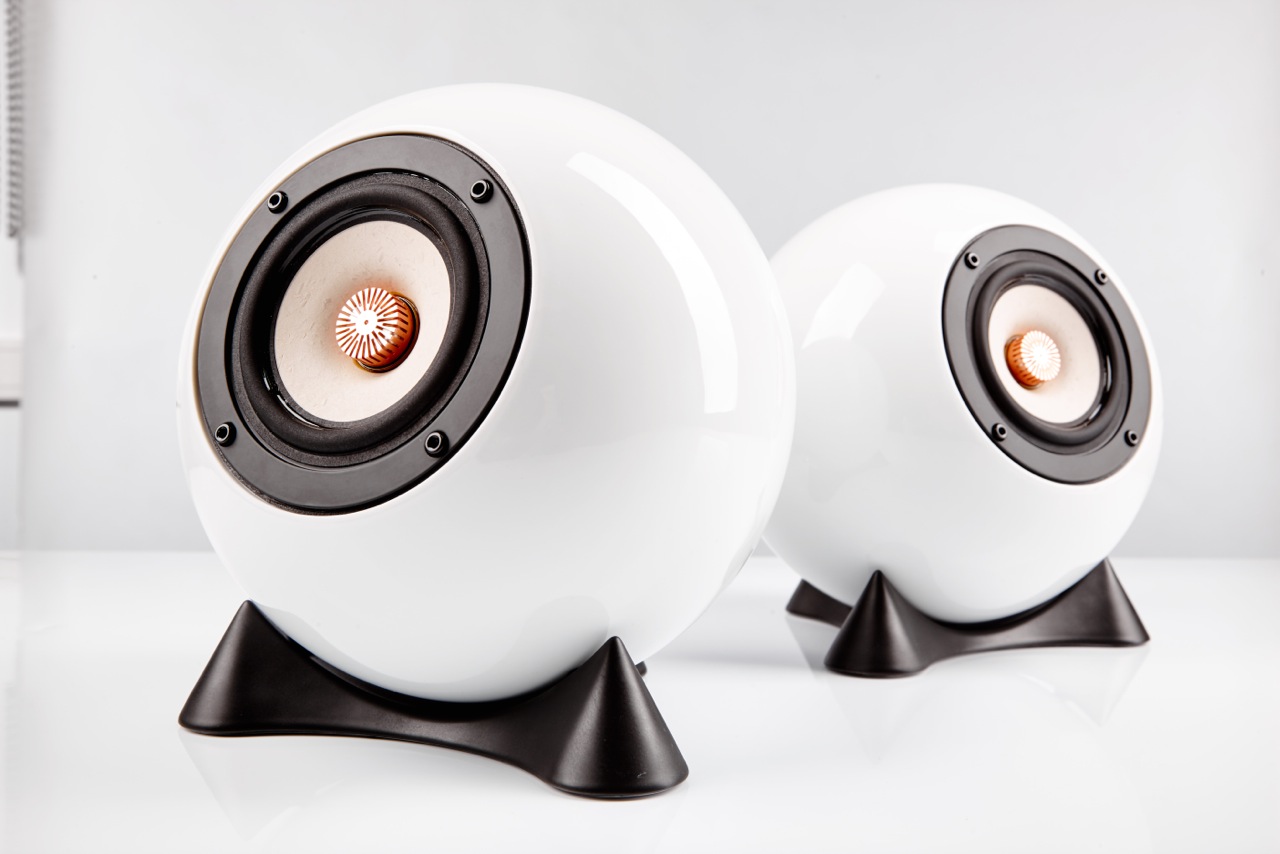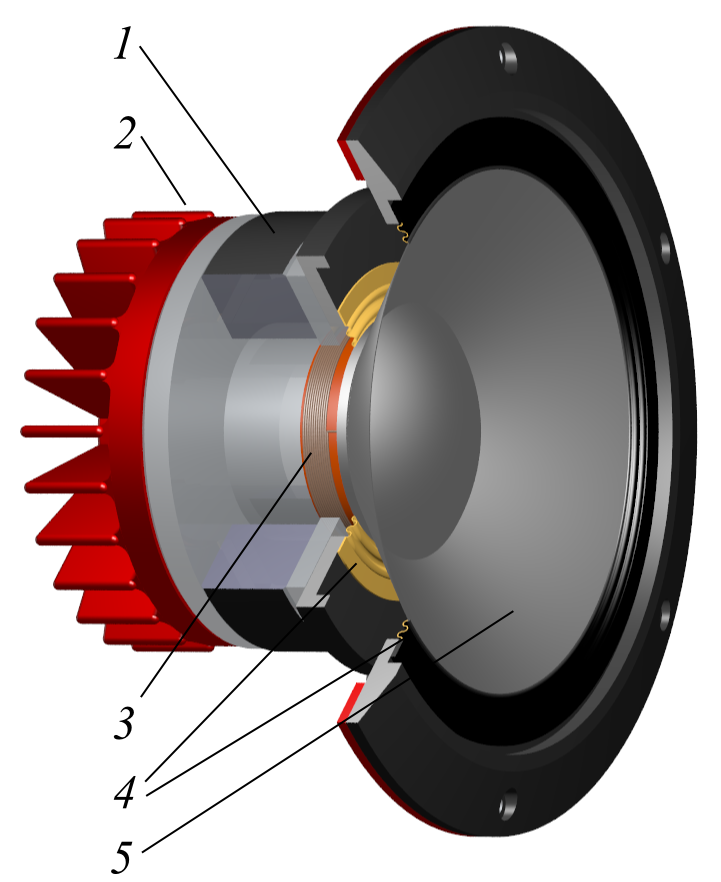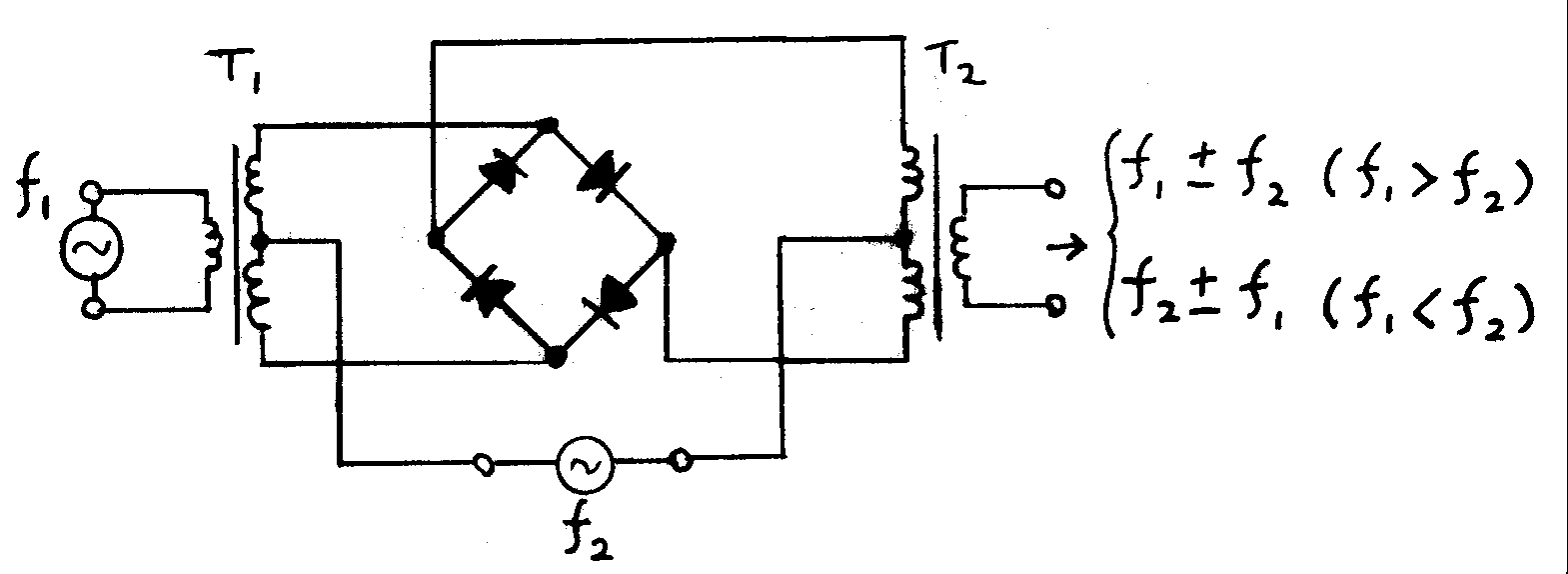|
Full-range
A full-range loudspeaker drive unit is defined as a driver which reproduces as much of the audible frequency range as possible, within the limitations imposed by the physical constraints of a specific design. The frequency range of these drivers is maximized through the use of a whizzer cone and other means. Most single driver systems, such as those in radios, or small computer speaker designs, cannot reproduce all of the audible frequencies or the entire audible audio range (i.e., sound within the range of human hearing). Typical designs Typically, a full-range drive unit consists of a single driver element, or ''voice coil'', used to move and control a ''diaphragm''. Often the cone structure includes optimizations to enhance high-frequency performance. For example, a small low-mass horn or whizzer cone can be mounted where the voice coil and diaphragm meet, thereby increasing the output at high frequencies. The shape and materials used in the cone and whizzer are highly opt ... [...More Info...] [...Related Items...] OR: [Wikipedia] [Google] [Baidu] |
Loudspeaker
A loudspeaker (commonly referred to as a speaker or speaker driver) is an electroacoustic transducer that converts an electrical audio signal into a corresponding sound. A ''speaker system'', also often simply referred to as a "speaker" or "loudspeaker", comprises one or more such speaker ''drivers'', an enclosure, and electrical connections possibly including a crossover network. The speaker driver can be viewed as a linear motor attached to a diaphragm which couples that motor's movement to motion of air, that is, sound. An audio signal, typically from a microphone, recording, or radio broadcast, is amplified electronically to a power level capable of driving that motor in order to reproduce the sound corresponding to the original unamplified electronic signal. This is thus the opposite function to the microphone; indeed the ''dynamic speaker'' driver, by far the most common type, is a linear motor in the same basic configuration as the dynamic microphone which uses suc ... [...More Info...] [...Related Items...] OR: [Wikipedia] [Google] [Baidu] |
Audio Crossover
Audio crossovers are a type of electronic filter circuitry that splits an audio signal into two or more frequency ranges, so that the signals can be sent to loudspeaker drivers that are designed to operate within different frequency ranges. The crossover filters can be either active or passive. They are often described as ''two-way'' or ''three-way'', which indicate, respectively, that the crossover splits a given signal into two frequency ranges or three frequency ranges. Crossovers are used in loudspeaker cabinets, power amplifiers in consumer electronics ( hi-fi, home cinema sound and car audio) and pro audio and musical instrument amplifier products. For the latter two markets, crossovers are used in bass amplifiers, keyboard amplifiers, bass and keyboard speaker enclosures and sound reinforcement system equipment (PA speakers, monitor speakers, subwoofer systems, etc.). Crossovers are used because most individual loudspeaker drivers are incapable of covering the en ... [...More Info...] [...Related Items...] OR: [Wikipedia] [Google] [Baidu] |
Woofer
A woofer or bass speaker is a technical term for a loudspeaker driver designed to produce low frequency sounds, typically from 50 Hz up to 1000 Hz. The name is from the onomatopoeic English word for a dog's bark, "woof" (in contrast to the name used for loudspeakers designed to reproduce high-frequency sounds, '' tweeter''). The most common design for a woofer is the electrodynamic driver, which typically uses a stiff paper cone, driven by a voice coil surrounded by a magnetic field. The voice coil is attached by adhesives to the back of the loudspeaker cone. The voice coil and the magnet form a linear electric motor. When current flows through the voice coil, the coil moves in relation to the frame according to Fleming's left hand rule for motors, causing the coil to push or pull on the driver cone in a piston-like way. The resulting motion of the cone creates sound waves, as it moves in and out. At ordinary sound pressure levels (SPL), most humans can hear down to a ... [...More Info...] [...Related Items...] OR: [Wikipedia] [Google] [Baidu] |
Midrange Speaker
A mid-range speaker is a loudspeaker driver that reproduces sound in the frequency range from 250 to 2000 Hz. It is also known as a squawker. Mid-range drivers are usually cone types or, less commonly, dome types, or compression horn drivers. The radiating diaphragm of a cone mid-range unit is a truncated cone, with a voice coil attached at the neck, along with the spider portion of the suspension, and with the cone surround at the wide end. Cone mid-range drivers typically resemble small woofers. The most common material used for mid-range cones is paper, occasionally impregnated and/or surface-treated with polymers or resins in order to improve vibrational damping. Other mid-range cone materials include plastics such as polypropylene, Cobex, Bextrene, woven Kevlar, fiberglass, carbon fiber, or light metal alloys based on aluminium, magnesium, titanium, or other alloys. The radiating surface of a dome mid-range is typically a 90-degree section of a sphere, made from cloth, metal ... [...More Info...] [...Related Items...] OR: [Wikipedia] [Google] [Baidu] |
Super Tweeter
A super tweeter is a speaker driver intended to produce ultra high frequencies in a multi-driver loudspeaker system. Its purpose is to recreate a more realistic sound field, often characterized as "airy-ness". Super tweeters are sometimes found in high fidelity speaker systems and sometimes even in home theater systems. They are used to supplement the sound of tweeters by reproducing frequencies which the tweeter may produce only with a narrow polar output, or perhaps with distortion. A super tweeter is generally intended to respond well into ultrasonic frequencies over 20 kHz, the commonly accepted upper frequency limit of human hearing. Super tweeters have been designed for psychoacoustic testing, for extended-range digital audio such as Super Audio CD intended for audiophiles, for biologists performing research on animal response to sounds, and for ambient sound systems in zoos. Ribbon tweeters have been made that can reproduce 80 kHz and even 100 kHz. See also ... [...More Info...] [...Related Items...] OR: [Wikipedia] [Google] [Baidu] |
Tweeter
A tweeter or treble speaker is a special type of loudspeaker (usually dome, inverse dome or horn-type) that is designed to produce high audio frequencies, typically deliver high frequencies up to 100 kHz. The name is derived from the high pitched sounds made by some birds (tweets), especially in contrast to the low woofs made by many dogs, after which low-frequency drivers are named (woofers). Operation Nearly all tweeters are electrodynamic drivers using a voice coil suspended within a fixed magnetic field. These designs operate by applying current from the output of an amplifier circuit to a coil of wire called a voice coil. The voice coil produces a varying magnetic field, which works against the fixed magnetic field of a permanent magnet around which the cylindrical voice coil is suspended, forcing the voice coil and the diaphragm attached to it to move. This mechanical movement resembles the waveform of the electronic signal supplied from the amplifier's output ... [...More Info...] [...Related Items...] OR: [Wikipedia] [Google] [Baidu] |
Loudspeaker Enclosure
A loudspeaker enclosure or loudspeaker cabinet is an enclosure (often rectangular box-shaped) in which speaker drivers (e.g., loudspeakers and tweeters) and associated electronic hardware, such as crossover circuits and, in some cases, power amplifiers, are mounted. Enclosures may range in design from simple, homemade DIY rectangular particleboard boxes to very complex, expensive computer-designed hi-fi cabinets that incorporate composite materials, internal baffles, horns, bass reflex ports and acoustic insulation. Loudspeaker enclosures range in size from small "bookshelf" speaker cabinets with woofers and small tweeters designed for listening to music with a hi-fi system in a private home to huge, heavy subwoofer enclosures with multiple or even speakers in huge enclosures which are designed for use in stadium concert sound reinforcement systems for rock music concerts. The primary role of the enclosure is to prevent sound waves generated by the rearward-facing ... [...More Info...] [...Related Items...] OR: [Wikipedia] [Google] [Baidu] |
Subwoofer
A subwoofer (or sub) is a loudspeaker designed to reproduce low-pitched audio frequencies known as bass and sub-bass, lower in frequency than those which can be (optimally) generated by a woofer. The typical frequency range for a subwoofer is about 20–200 Hz for consumer products, below 100 Hz for professional live sound, and below 80 Hz in THX-certified systems. Subwoofers are never used alone, as they are intended to ''augment'' the low-frequency range of loudspeakers that cover the higher frequency bands. While the term "subwoofer" technically only refers to the speaker driver, in common parlance, the term often refers to a subwoofer driver mounted in a speaker enclosure (cabinet), often with a built-in amplifier. Subwoofers are made up of one or more woofers mounted in a loudspeaker enclosure—often made of wood—capable of withstanding air pressure while resisting deformation. Subwoofer enclosures come in a variety of designs, including bass reflex (wit ... [...More Info...] [...Related Items...] OR: [Wikipedia] [Google] [Baidu] |
Frequency Mixer
In electronics, a mixer, or frequency mixer, is an electrical circuit that creates new frequencies from two signals applied to it. In its most common application, two signals are applied to a mixer, and it produces new signals at the sum and difference of the original frequencies. Other frequency components may also be produced in a practical frequency mixer. Mixers are widely used to shift signals from one frequency range to another, a process known as heterodyning, for convenience in transmission or further signal processing. For example, a key component of a superheterodyne receiver is a mixer used to move received signals to a common intermediate frequency. Frequency mixers are also used to modulate a carrier signal in radio transmitters. Types The essential characteristic of a mixer is that it produces a component in its output which is the product of the two input signals. Both active and passive circuits can realize mixers. Passive mixers use one or more diodes an ... [...More Info...] [...Related Items...] OR: [Wikipedia] [Google] [Baidu] |
Intermodulation Distortion
Intermodulation (IM) or intermodulation distortion (IMD) is the amplitude modulation of signals containing two or more different frequencies, caused by nonlinearities or time variance in a system. The intermodulation between frequency components will form additional components at frequencies that are not just at harmonic frequencies (integer multiples) of either, like harmonic distortion, but also at the sum and difference frequencies of the original frequencies and at sums and differences of multiples of those frequencies. Intermodulation is caused by non-linear behaviour of the signal processing (physical equipment or even algorithms) being used. The theoretical outcome of these non-linearities can be calculated by generating a Volterra series of the characteristic, or more approximately by a Taylor series. Practically all audio equipment has some non-linearity, so it will exhibit some amount of IMD, which however may be low enough to be imperceptible by humans. Du ... [...More Info...] [...Related Items...] OR: [Wikipedia] [Google] [Baidu] |







